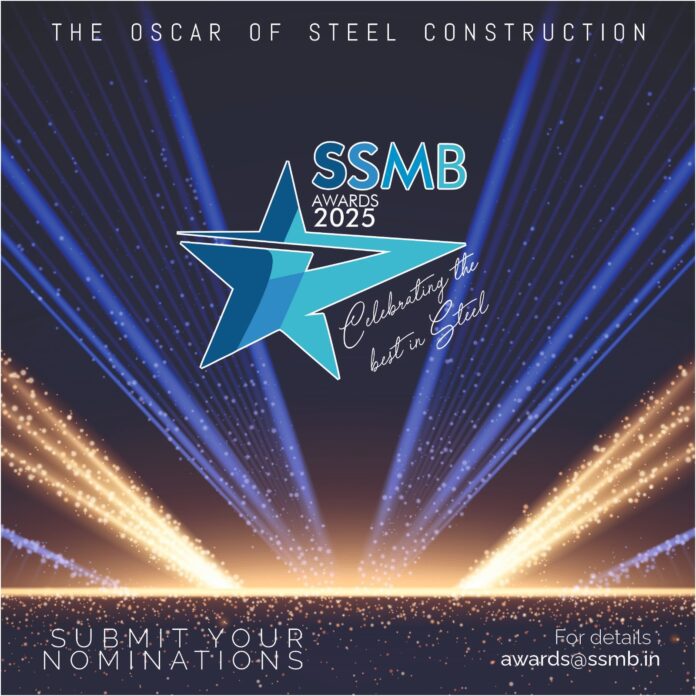Modern architecture is undergoing a transformative shift, embracing free-form geometries powered by computational design. Exploring the synergy between mathematics and materials, freeform grid shells are reshaping the architectural landscape.
Free-form geometries are gaining traction in contemporary architecture. This trend is aided by the nascent discipline of computational design by which one can create complex geometry using a mathematical approach. CAAD (Computer Aided Architectural Design) software use two ways to generate free-form geometries – by traversing a generatrix over a directrix curve, also known as lofting or by fitting a NURBS (Non-Uniform Rational Basis Spline) surface through predefined control points.
While concrete, timber and aluminium are used for free-form construction, a grid shell consisting of a single-layer lattice in steel is the economical and aesthetically pleasing alternative. Such grid shells came into vogue in the 1960s and 1970s with the lead taken by Buckminster Fuller and Frei Otto who designed the geodesic Biosphere, Montreal in 1967 and free form grid shell Multihalle, Mannheim in 1975 respectively.
Standalone photo. Window cleaners at work at The Sage music and arts centre by the River Tyne in Gateshead.






Elastic grid shells
An elastic grid shell is a subset constructed from an initially flat grid without shear stiffness which is deformed into double curvature in situ. Over-sized joints or bendability of members ensures the deformability of such grid shells. Manneheim Multihalle is an example of an elastic grid shell. Such deployable grids are rarely used for permanent structures and sometimes as formwork for concrete shells.
Surface reticulation of grid shells can take many forms – triangular and quadrilateral being the most common. Grid shells display an arch-like behaviour, if they are not triangulated, irrespective of single or double curvature, while double curvature triangulated grid shells behave like double curvature continuum shells.


Challenges
Generating grids for free-form surfaces is a daunting task, especially if the following optimization criteria must be met :

Uniform member length:
This criterion minimises material wastage and optimises the load capacity of beams.
Planarity of panels:
Cutting a panel from a flat sheet is significantly less expensive than creating a complex doubly curved or warped panel. Triangular and planar quads known as scale-trans surfaces meet this criterion but rarely the following two criteria.
Torsion-free nodes:
For ease of manufacturing and construction, central planes of beams meeting at nodes coaxially are preferred. Such a mesh is known as a Planar Quad Conical Mesh.

Perfect nodes:
This is a subset of torsion-free nodes where both the top and bottom of straight beams meet nodes coaxially. Such a mesh is known as Edge Offset Mesh.
A simple assessment of these methods for geometrical generation and optimization of form is proposed in Table 1. One + sign means that only a partial answer to the problem is provided. The ++ signs mean that the problem is completely treated by the strategy. An x sign shows that a solution performs poorly for a given optimization goal. The xx sign indicates that a strategy is not suited for the considered optimisation task.
Table 1
|
Optimisation |
Angle repetition |
Length uniformity |
Panels planarity |
Node complexity |
Design freedom |
|
Triangular Mesh |
x |
++ |
++ |
xx |
++ |
|
Scale-trans Surfaces |
xx |
++ |
++ |
x |
xx |
|
PQ Conical Mesh |
+ |
+ |
++ |
+ |
+ |
|
Edge Offset Mesh |
+ |
x |
++ |
++ |
x |
[Ref: Romain Mesnil, Cyril Douthe, Olivier Baverel, Bruno Léger, Jean-François Caron. Isogonal moulding surfaces: A family of shapes for high node congruence in free-form structures. Automation in Construction, 2015, 59, pp.38–47]
Design considerations
-
Curved surfaces experience axial compression and tension
-
Flat or low-curvature surfaces are subjected to bending
-
Member, snap-through and global buckling need to be checked.
-
Roof cladding affects buckling and seismic performance
-
Member-ends and nodes should be capable of transferring bending moments
While gravity loads are well-defined for freeform structures, wind forces need to be determined either experimentally by wind tunnel tests or numerically by CFD (Computational Fluid Dynamic) analysis.
A large free-form grid shell may constitute hundreds of node types. One way of reducing node types is by clustering nodes with close enough angles at apices and fold-lines and designing nodes that allow slight variations in these angles. The decision regarding the manufacturing process largely depends on the repeatability of the item :
Batch Production
Large number of identical items
Computer Numerically Controlled (CNC) Production
Medium number of identical items
Additive Manufacturing (3d Printing) of Mould
Small number of identical items
Around the world
Here are some of the notable free-form grid shells from around the world :
The Great Court, British Museum, London:
Engineered by Buro Happold to a design by Foster + Partners, and built by Waagner-Biro. Covering 6,100 sq m, the 315 tonnes of glass that make up the roof are supported by a 478-tonne steel structure.
Sage Gateshead Concert Hall, England:
Designed by Foster+Partners, the roof covers three concert halls. The whole surface is made up of multiple arrière-voussure planar surfaces generated by a line that sits on two directing curved lines.
House for Hippopotamus, Berlin Zoo:
The surface was designed by Architect J. Gribl as two separate parabolic translational meshes that are connected with an anticlastic, non-uniform network. This central grid acts as a transition from one translational mesh to the other. The two domes are built entirely from 1.2 m long rods and planar glass panels.
Yas Hotel Gridshell, Abu Dhabi:
Designed by Asymptote Architect, Abu Dhabi’s five-star Yas Hotel is the first to span a Formula 1 racetrack. Two hotel buildings on either side of a bridge are linked by a curvilinear 217 m grid-shell structure that incorporates a striking illuminated steel and glass veil. Arup was involved in the structural design of the hotel bridge which spans 40 m and encloses 980 sq m of interior space on two levels.
Contributed by –Rudra Nevatia, Consulting Engineer




